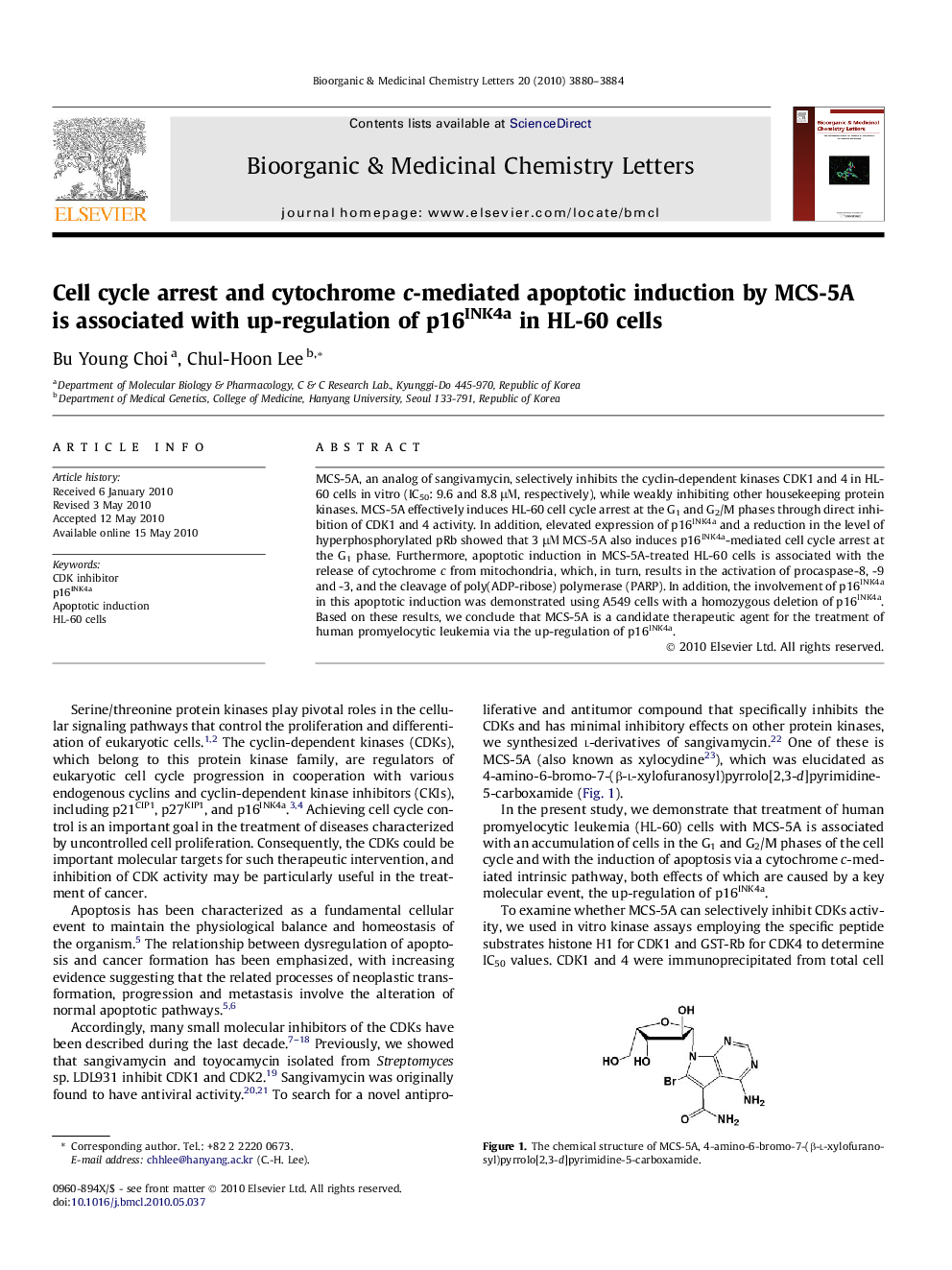| Article ID | Journal | Published Year | Pages | File Type |
|---|---|---|---|---|
| 1374011 | Bioorganic & Medicinal Chemistry Letters | 2010 | 5 Pages |
MCS-5A, an analog of sangivamycin, selectively inhibits the cyclin-dependent kinases CDK1 and 4 in HL-60 cells in vitro (IC50: 9.6 and 8.8 μΜ, respectively), while weakly inhibiting other housekeeping protein kinases. MCS-5A effectively induces HL-60 cell cycle arrest at the G1 and G2/M phases through direct inhibition of CDK1 and 4 activity. In addition, elevated expression of p16INK4a and a reduction in the level of hyperphosphorylated pRb showed that 3 μΜ MCS-5A also induces p16INK4a-mediated cell cycle arrest at the G1 phase. Furthermore, apoptotic induction in MCS-5A-treated HL-60 cells is associated with the release of cytochrome c from mitochondria, which, in turn, results in the activation of procaspase-8, -9 and -3, and the cleavage of poly(ADP-ribose) polymerase (PARP). In addition, the involvement of p16INK4a in this apoptotic induction was demonstrated using A549 cells with a homozygous deletion of p16INK4a. Based on these results, we conclude that MCS-5A is a candidate therapeutic agent for the treatment of human promyelocytic leukemia via the up-regulation of p16INK4a.
Graphical abstractThe chemical structure of MCS-5A 4-amino-6-bromo-7-(β-l-xylofuranosyl)pyrrolo[2,3-d]pyrimidine-5-carboxamide.Figure optionsDownload full-size imageDownload as PowerPoint slide
